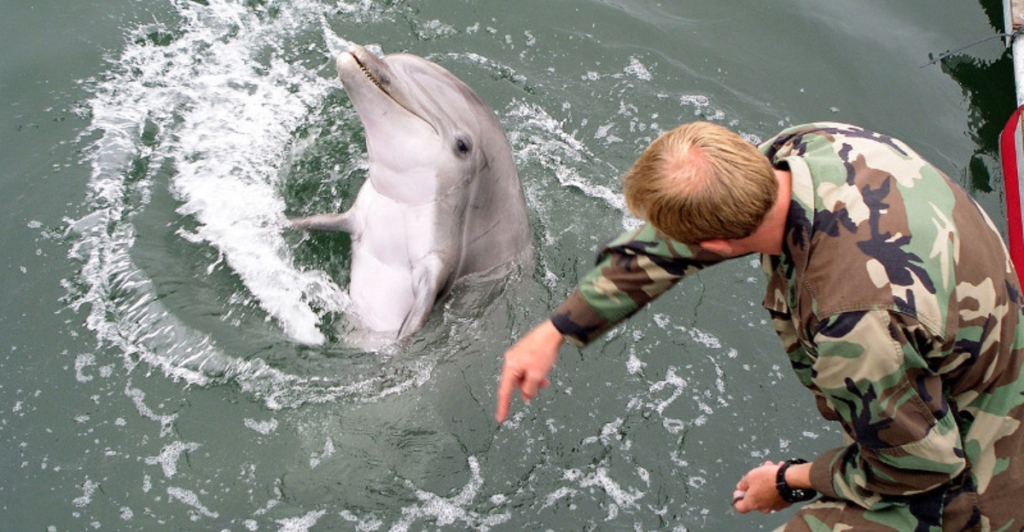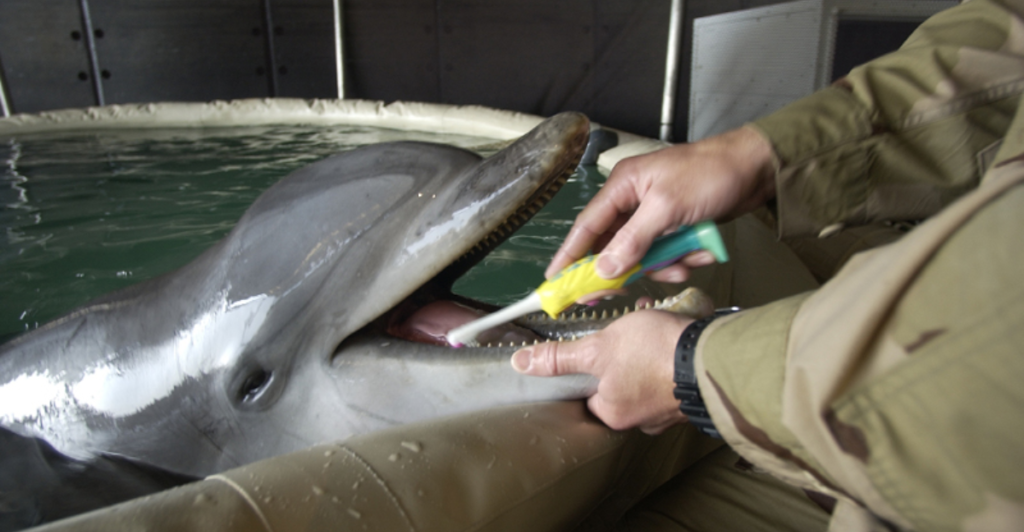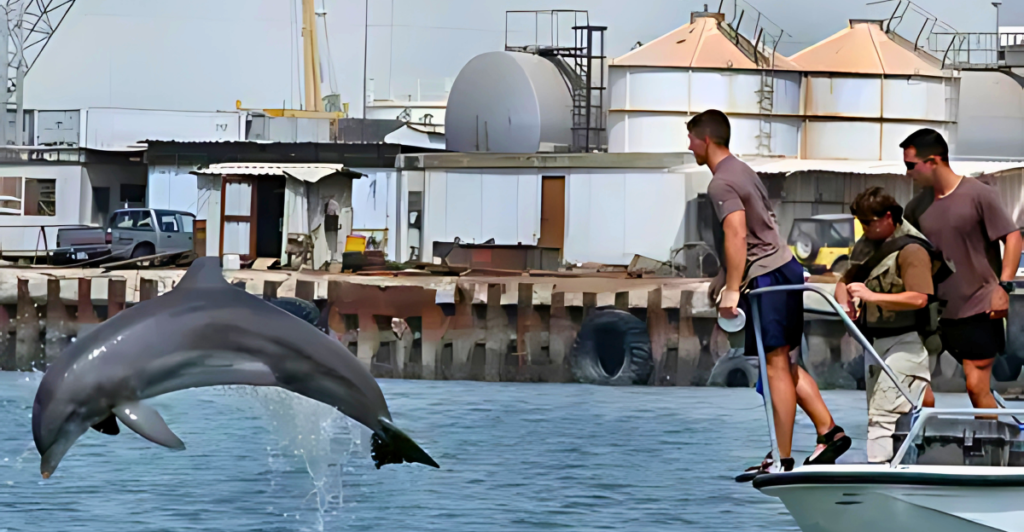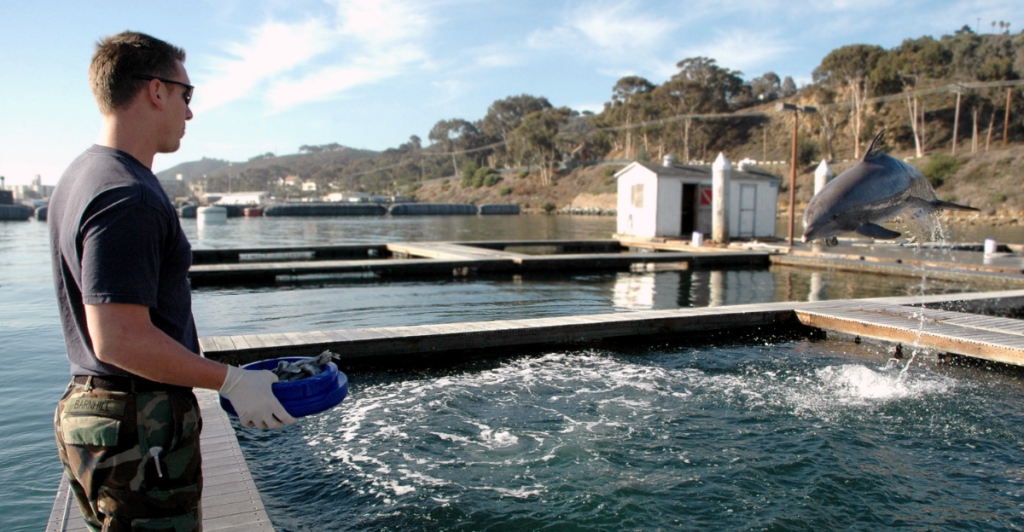
In the murky depths of America’s coastal waters, dolphins patrol some of the nation’s most critical military sites. A lesser-known but highly effective defense strategy, the U.S. Navy’s Marine Mammal Program relies on trained dolphins to protect a staggering 25% of America’s nuclear arsenal. These intelligent mammals serve as underwater sentinels, detecting enemy divers, explosives, and suspicious activity near military installations. However, with technological advancements and ethical concerns growing louder, their future in national security hangs in the balance.
A Program Born During the Cold War

The U.S. Navy Marine Mammal Program began in 1960 during the height of the Cold War, when the military sought unconventional solutions to underwater threats. Dolphins and sea lions were chosen for their extraordinary natural abilities. Dolphins, in particular, excelled due to their echolocation, agility, and high trainability. Over the decades, these marine mammals have played a critical role in ensuring the safety of ports, harbors, and nuclear submarine bases across the United States.
Numbers and the Nuclear Connection

According to 2024 statistics from the U.S. Department of Defense, dolphins currently safeguard approximately 25% of America’s nuclear arsenal, spread across key naval installations. This includes strategic locations such as the Naval Submarine Base Bangor in Washington state, which houses a significant portion of the country’s ballistic missile submarines. The animals’ ability to identify potential threats—like underwater mines or saboteurs—has proven indispensable.
How the Dolphins Work

The dolphins operate with military precision. Trained handlers direct them using whistles and hand signals. When a dolphin detects an object or diver, it marks the location by dropping a buoy. Their echolocation allows them to distinguish between harmless debris and actual threats with astonishing accuracy. For operations near nuclear arsenals, the dolphins are equipped with small tracking devices that relay real-time data to handlers stationed nearby.
Efficiency Versus Technology

Despite their effectiveness, questions have arisen about the long-term use of dolphins in military defense. In recent years, advanced underwater drones and artificial intelligence have begun to replicate the dolphins’ roles. A 2024 report from the Congressional Research Service highlights that automated systems can now scan for threats faster and with broader coverage. However, experts argue that no machine yet matches the dexterity and cognitive flexibility of dolphins in complex environments.
Ethical Questions and Public Scrutiny

While the program has been lauded for its success, it has faced growing ethical opposition. Animal rights organizations like the Humane Society and PETA have long criticized the use of marine mammals for military purposes. Their concerns include the stress of training, unnatural living conditions, and the potential risks posed by combat scenarios. Recent polls show that 58% of Americans believe the program should transition to technology within the next decade to phase out dolphin involvement.
Military Defense Stance

The U.S. Navy remains firm in its stance on the program’s value. Admiral Thomas Grant, Director of Naval Security, explained in a 2024 press briefing, “These dolphins are a cornerstone of our underwater defense systems. They provide capabilities that we cannot yet replicate with machines alone. Their presence is a proven deterrent to foreign threats.” Grant emphasized that the dolphins receive world-class care, nutrition, and veterinary support, living significantly longer than their wild counterparts.
Costs and Maintenance of the Program

Maintaining the Marine Mammal Program does not come cheap. According to the Navy’s 2024 budget report, the program costs approximately $30 million annually. This figure includes personnel salaries, training facilities, specialized care, and transportation for the dolphins when deployed. Critics argue that the funds could be redirected to further advance robotic systems, which might eventually reduce costs over time.
Success Stories on the Front Lines

The program’s successes are well documented. One of the most notable cases occurred in 2003 during the Iraq War, when Navy dolphins detected over 100 underwater mines in the Persian Gulf, safeguarding U.S. and allied ships. Closer to home, dolphins have reportedly thwarted multiple intrusions near submarine bases in recent years, though the details remain classified. These examples underscore the ongoing relevance of the dolphins in high-stakes defense operations.
Technological Alternatives on the Rise

As AI-driven technology evolves, underwater drones and sonar systems are becoming more sophisticated. Companies like Lockheed Martin and Boeing are developing autonomous submersibles equipped with advanced sensors and real-time threat detection capabilities. The Department of Defense has already allocated $2 billion over the next five years for underwater robotics research, signaling a possible shift away from biological solutions.
The Dolphins’ Future: A Transition Period?

Many experts predict that the Marine Mammal Program will eventually be phased out, but not immediately. Dr. Elaine Richards, a marine biologist and advisor to the Navy, suggests a gradual transition is likely. “These dolphins provide security today, but we cannot ignore the ethical and technological pressures. Over the next 10 to 15 years, we may see a hybrid approach where dolphins and machines work in tandem until technology fully catches up.”
Protectors in the Spotlight

The increasing attention on this unique program has sparked greater public interest in the lives of these dolphins. Documentaries, news features, and social media campaigns have highlighted their training and care. Many Americans remain divided, appreciating the dolphins’ role while questioning its morality. The Navy’s transparency efforts, such as facility tours and public information sessions, aim to address concerns while showcasing the animals’ abilities.
A Critical Turning Point

As the United States navigates the crossroads of ethics, technology, and security, the future of its dolphin defenders remains uncertain. For now, these marine mammals continue to protect a quarter of America’s nuclear arsenal, proving that nature and national defense can work hand in hand. Whether they remain in service for decades or transition out, the dolphins have already earned their place as one of the most unique and surprising components of America’s military history.
Stay connected with us for more stories like this! Follow us to get the latest updates or hit the Follow button at the top of this article, and let us know what you think by leaving your feedback below. We’d love to hear from you!







